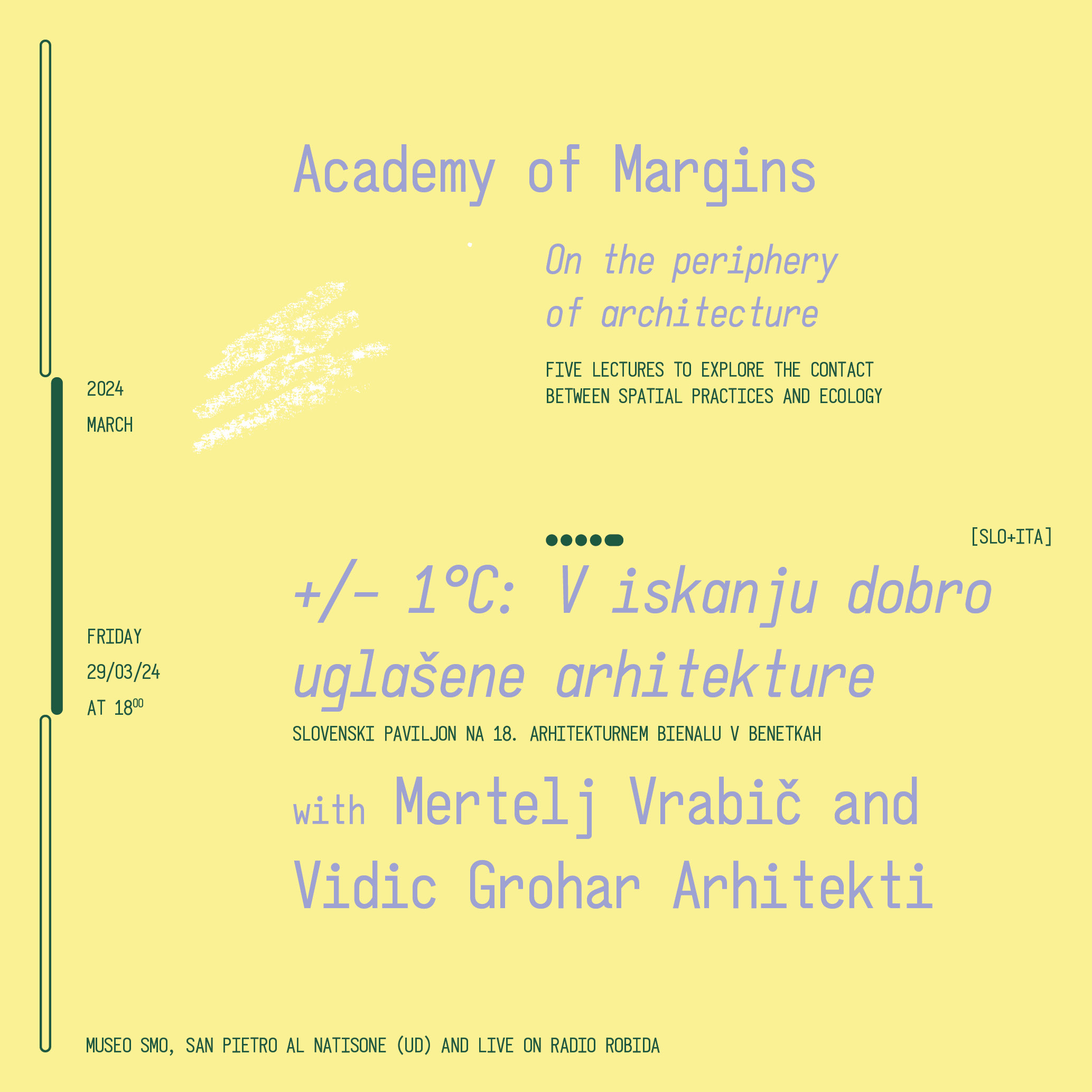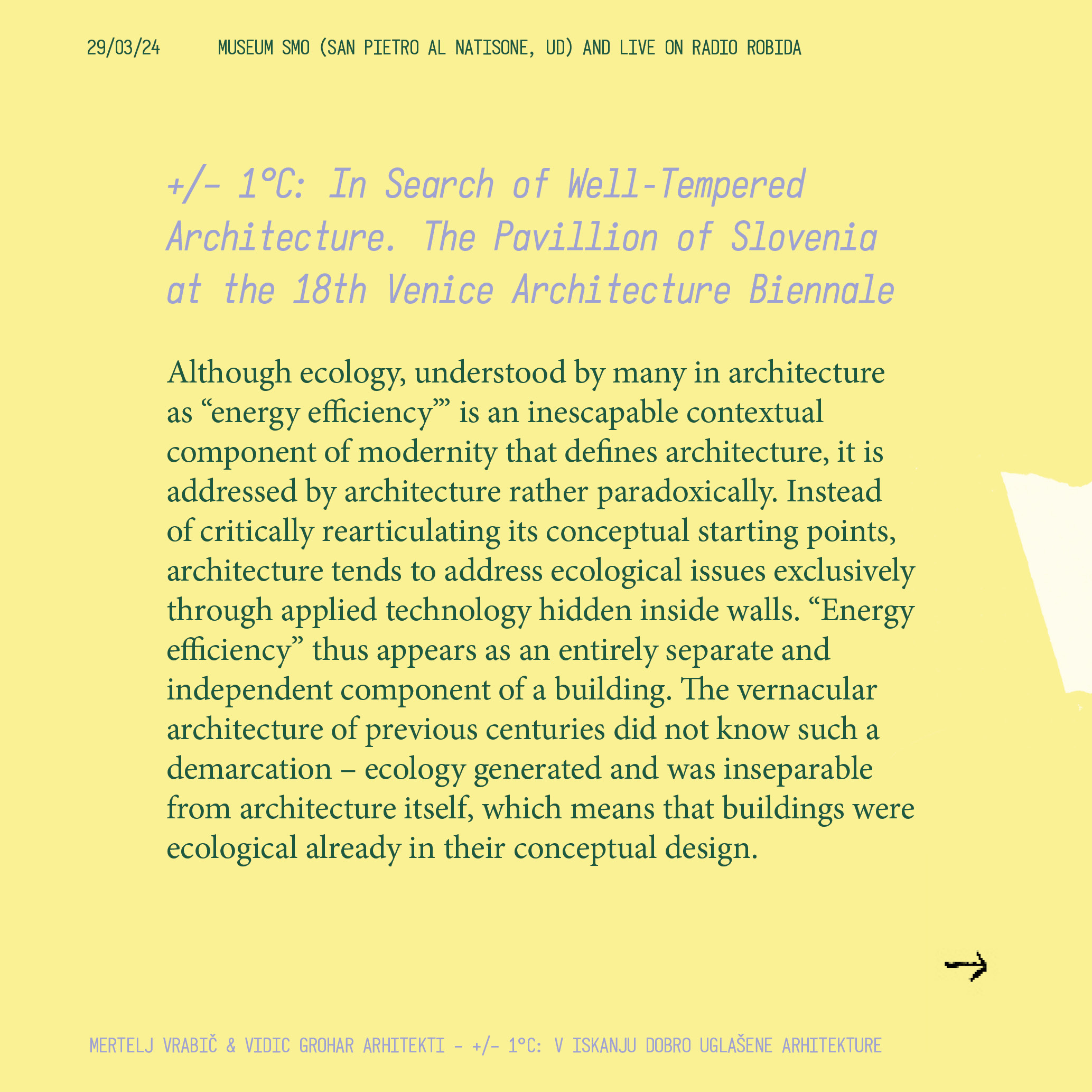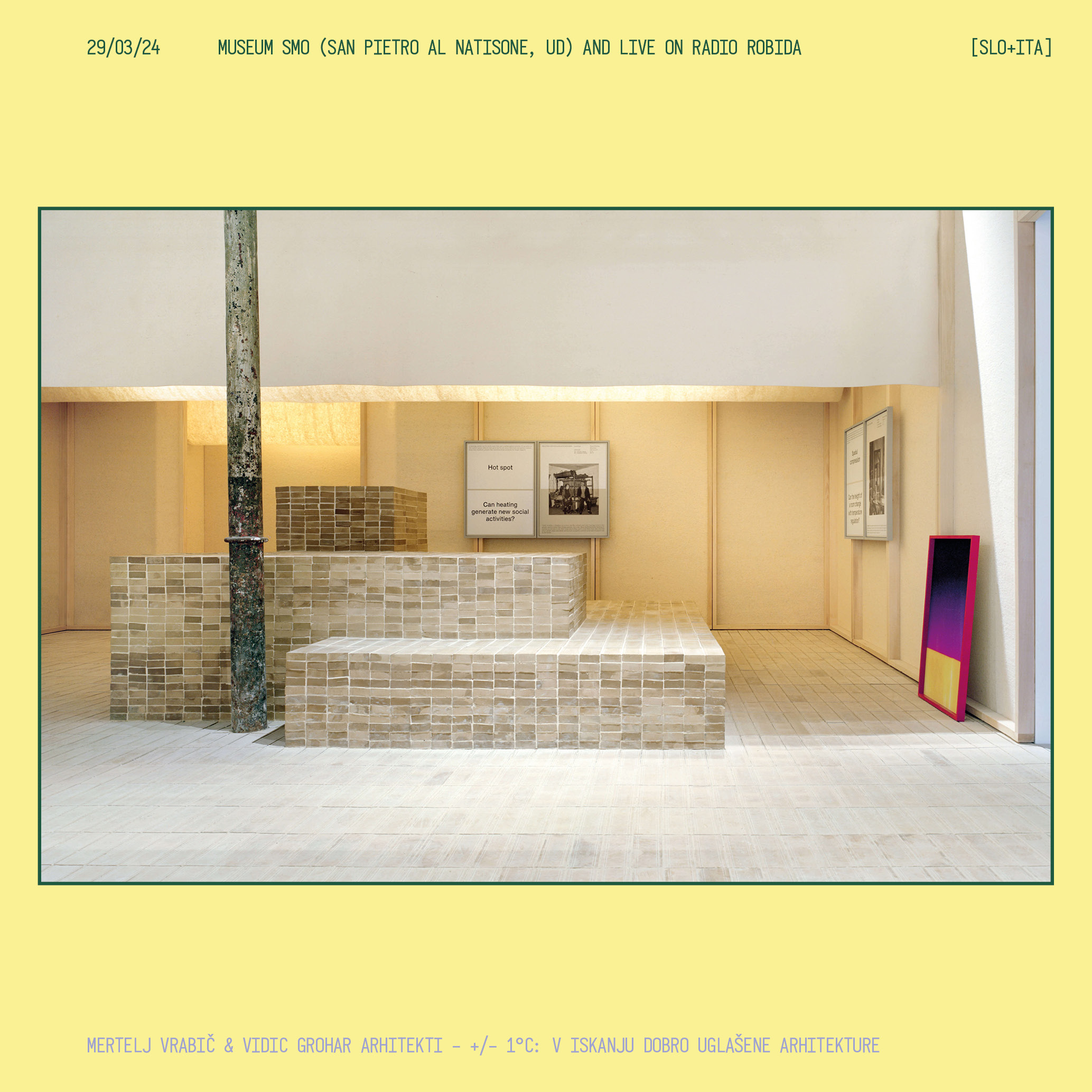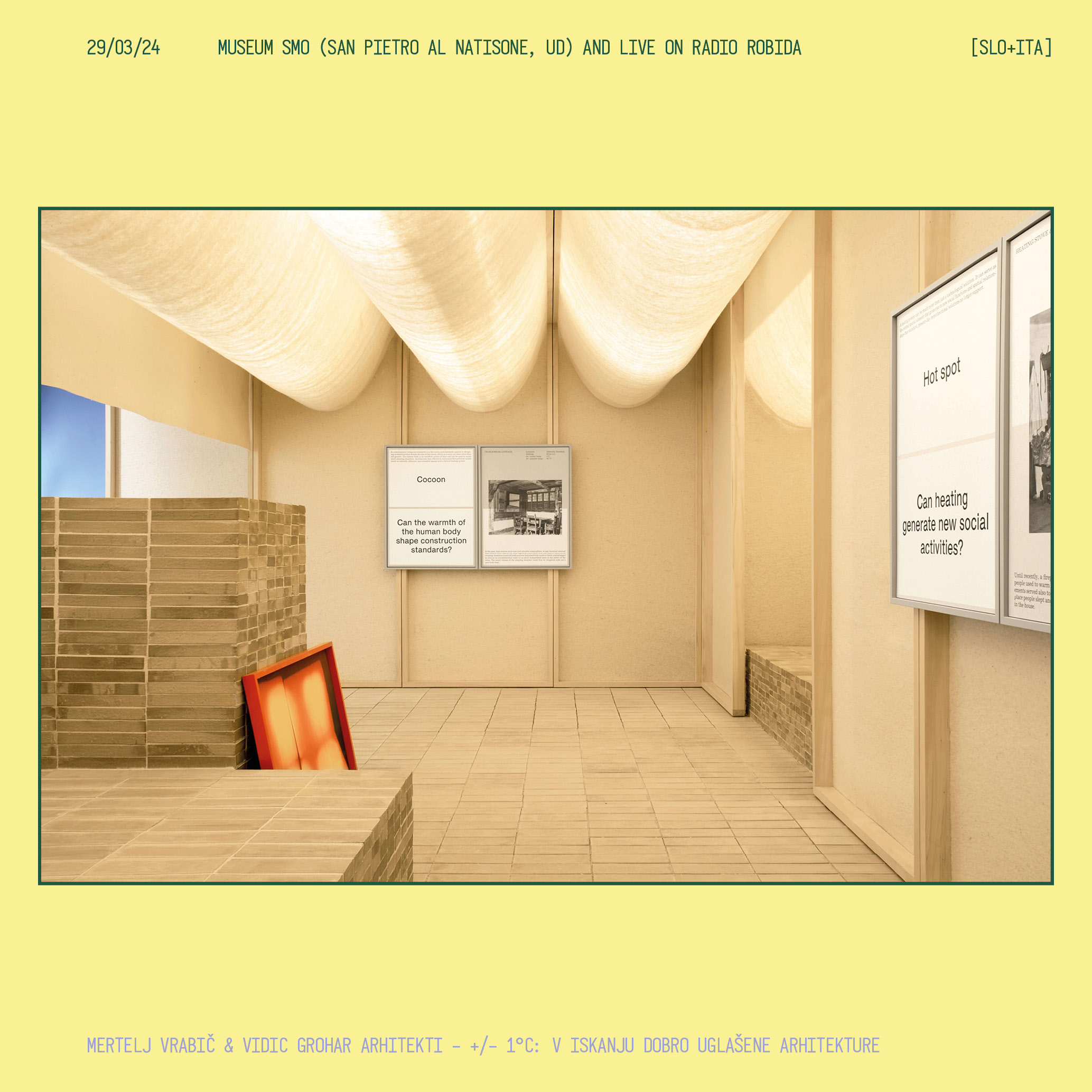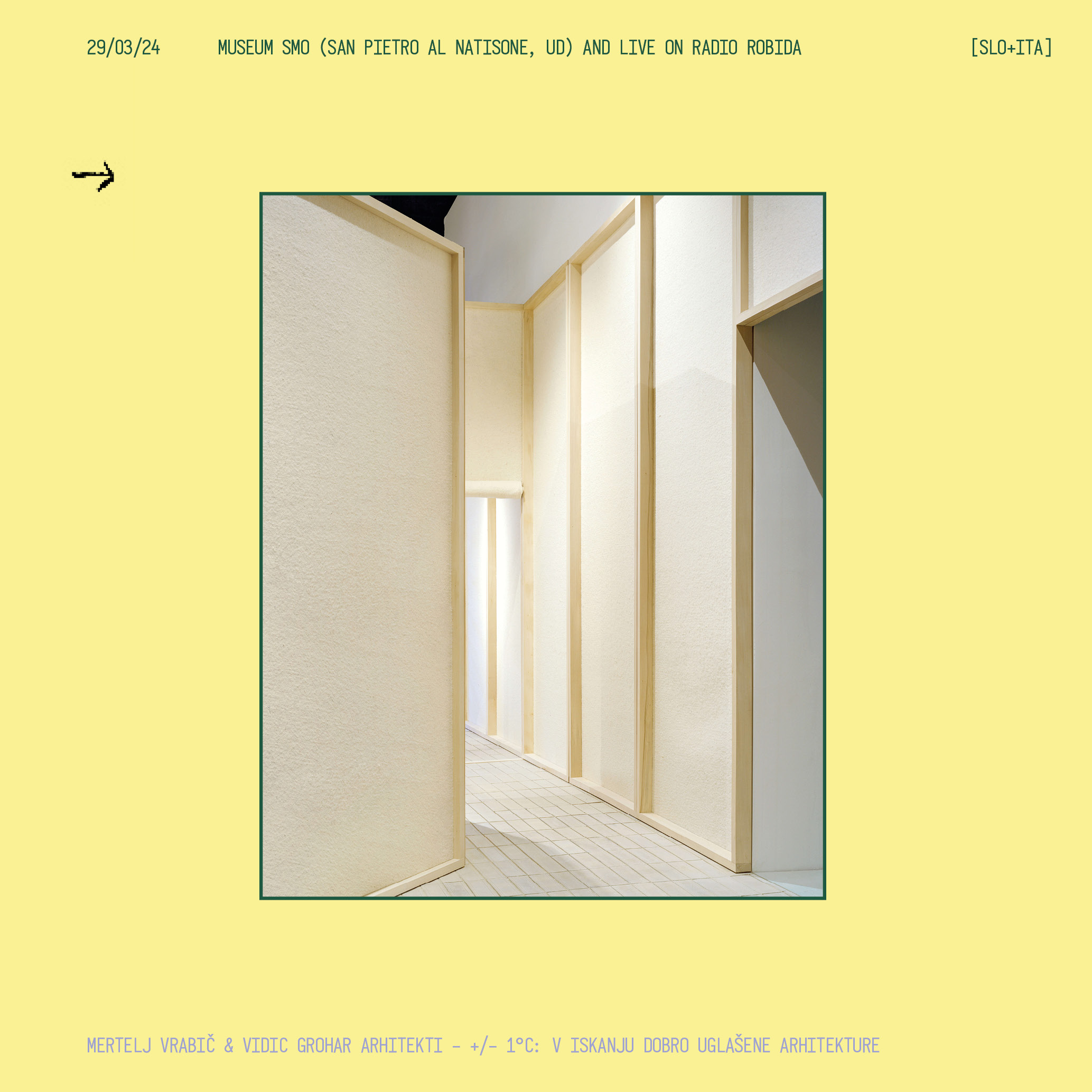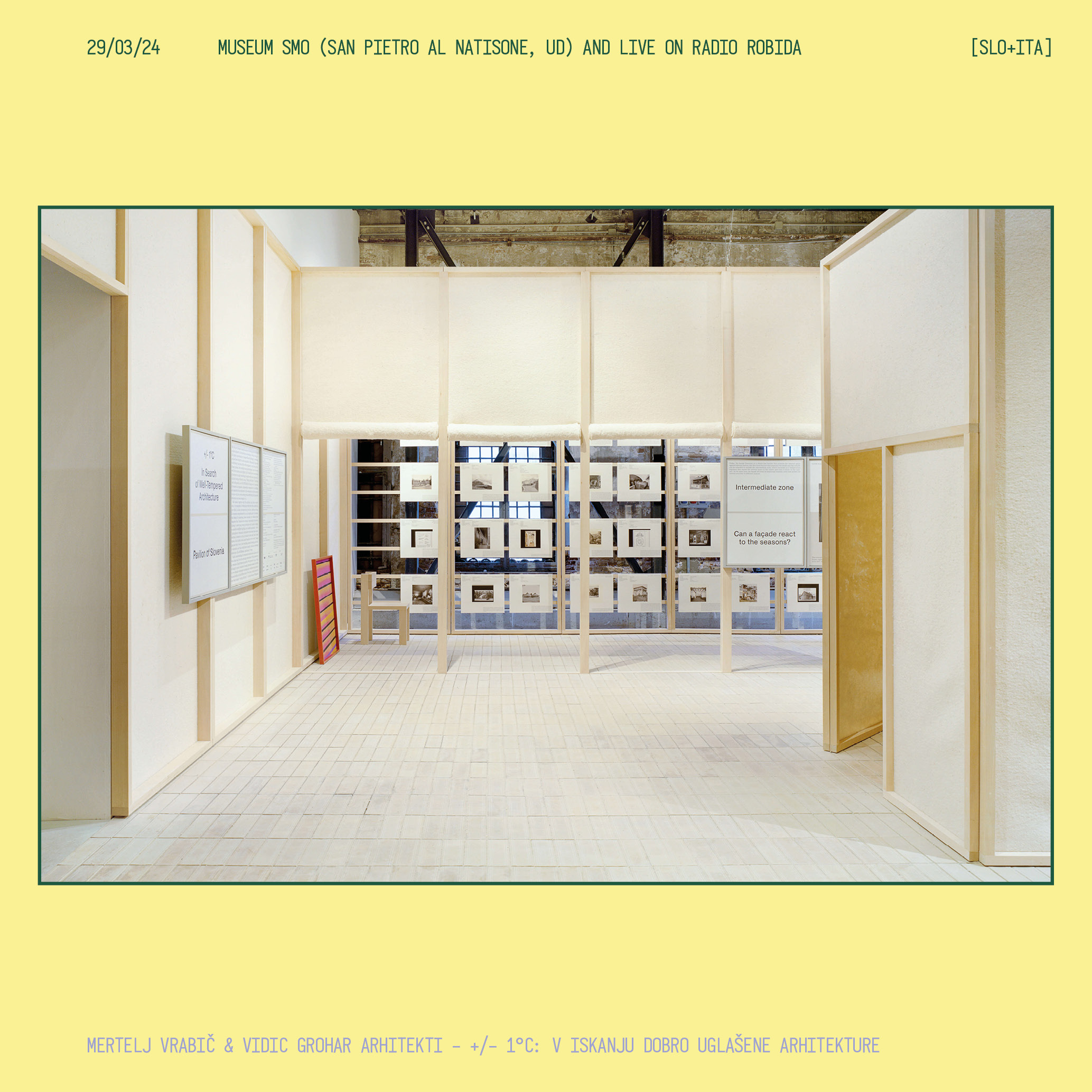On the periphery of architecture
Five lectures to explore the contact between spatial practices and ecology
more info about the cycle of lectures here
Friday, 29 March 2024 at 18.00
museum SMO, San Pietro al Natisone (UD) & live on Radio Robida
+/– 1°C: In Search of Well-Tempered Architecture. The Pavillion of Slovenia at the 18th Venice Architecture Biennale
lecture by Mertelj Vrabič & Vidic Grohar Arhitekti
{language: Italian + Slovene}
Although ecology, understood by many in architecture as 'energy efficiency', is an inescapable contextual component of modernity that defines architecture, it is addressed by architecture rather paradoxically. Instead of critically rearticulating its conceptual starting points, architecture tends to address ecological issues exclusively through applied technology hidden inside walls. 'Energy efficiency' thus appears as an entirely separate and independent component of a building. The vernacular architecture of previous centuries did not know such a demarcation – ecology generated and was inseparable from architecture itself, which means that buildings were ecological already in their conceptual design.
In collaboration with 50 European architects and younger generation creators, we have sought out examples of vernacular buildings from Europe that address the issue of ecology as an intrinsic part of architectural design and divided them into categories according to their main energy principles. The examples presented also show that energy-related inputs in vernacular architecture did not generally serve as mono-functional elements but had a social and ritual role in addition to their primary function.
→ Eva Gusel, Maša Mertelj, Matic Vrabič (Mertelj Vrabič Arhitekti)
Maša Mertelj and Matic Vrabič founded Mertelj Vrabič Arhitekti in 2015. Since its foundation, the office has realized numerous renovations and exhibition design projects, which are regularly published in Slovenian and international magazines. The firm was selected for presentation in the Carnets publication Architecture Is Just a Pretext, which presents 30 young European practices and was part of the New Praxes, New Tools project in Ljubljana, Berlin, and Vienna. Eva Gusel started working with Mertelj Vrabič Arhitekti in 2019. She is the co-author of the project for the renovation of the Metalka office, for which they received a nomination for the Plečnik Medal. Since 2021 she is a member of the editorial board of Outsider magazine.
→ Jure Grohar, Anja Vidic (Vidic Grohar Arhitekti)
Vidic Grohar Arhitekti was founded in Ljubljana in 2016 by Anja Vidic and Jure Grohar, who in 2023 defended his PhD thesis with the title Expanded Strategies of Contemporary Architecture at Ljubljana Faculty of Architecture. In their projects, they do not follow a pre-set architectural agenda, but freely develop new specific architectural, design, and curatorial solutions through the rearticulation of given situations. They combine their architectural practice with teaching. Their work has been presented in several exhibitions and publications, most recently as part of the international project Objects of Fascination in Brussels (MAD Brussels) and Paris (Pavillon Arsenal), and the New Praxes, New Tools event in Ljubljana (ŠKUC Gallery), Berlin (AEDES Metrolab), and Vienna (TU Wien).
•
+/– 1°C: Alla ricerca di un’architettura ben temperata. Il padiglione sloveno alla 18. Biennale di architettura di Venezia
Sebbene l'ecologia, intesa da molti in architettura come “efficienza energetica”, sia una componente contestuale inevitabile della modernità che definisce l'architettura, l'architettura la affronta in modo piuttosto paradossale. Invece di riarticolarne criticamente i punti di partenza concettuali, l’architettura tende ad affrontare le questioni ecologiche esclusivamente attraverso la tecnologia applicata nascosta all’interno dei muri. L'“efficienza energetica” appare quindi come una componente del tutto separata e indipendente di un edificio. L’architettura vernacolare non conosceva tale demarcazione: l’ecologia generava ed era inseparabile dall’architettura stessa, il che significa che gli edifici erano ecologici già nella loro progettazione concettuale.
In collaborazione con 50 architetti europei delle generazioni più giovani, abbiamo cercato esempi di edifici vernacolari europei che affrontano la questione dell’ecologia come parte intrinseca della progettazione architettonica e li abbiamo suddivisi in categorie in base ai loro principali principi energetici. Gli esempi presentati mostrano anche che gli input legati all’energia nell’architettura vernacolare non servivano generalmente come elementi monofunzionali ma avevano un ruolo sociale e rituale oltre alla loro funzione primaria.
→ Eva Gusel, Maša Mertelj, Matic Vrabič (Mertelj Vrabič Arhitekti)
Maša Mertelj e Matic Vrabič hanno fondato Mertelj Vrabič Arhitekti nel 2015. Fin dalla sua fondazione, lo studio ha realizzato numerosi progetti di ristrutturazione ed allestimento espositivo, che vengono regolarmente pubblicati su riviste slovene e internazionali. Lo studio è stato selezionato per essere presentato nella pubblicazione Architecture Is Just a Pretext, che presenta 30 giovani studi europei e ha fatto parte del progetto New Praxes, New Tools a Lubiana, Berlino e Vienna. Eva Gusel ha iniziato a collaborare con Mertelj Vrabič Arhitekti nel 2019. È coautrice del progetto per la ristrutturazione dell'ufficio Metalka, per il quale hanno ricevuto una nomination per la Medaglia Plečnik. Dal 2021 fa parte del comitato di redazione della rivista Outsider.
→ Jure Grohar, Anja Vidic (Vidic Grohar Arhitekti)
Vidic Grohar Arhitekti è uno studio nato a Lubiana nel 2016 da Anja Vidic e Jure Grohar, che nel 2023 ha difeso la sua tesi di dottorato con il titolo Strategie ampliate dell'architettura contemporanea presso la Facoltà di Architettura di Lubiana. Nei loro progetti, non seguono un’agenda architettonica preimpostata, ma sviluppano liberamente soluzioni architettoniche, progettuali e curatoriali specifiche attraverso la riarticolazione di situazioni date. Combinano la loro pratica architettonica con l'insegnamento. Il loro lavoro è stato presentato in numerose mostre e pubblicazioni, più recentemente nell'ambito del progetto internazionale Objects of Fascination a Bruxelles (MAD Bruxelles) e Parigi (Pavillon Arsenal), e dell'evento New Praxes, New Tools a Lubiana (ŠKUC Gallery), Berlino (AEDES Metrolab) e Vienna (TU Wien).

